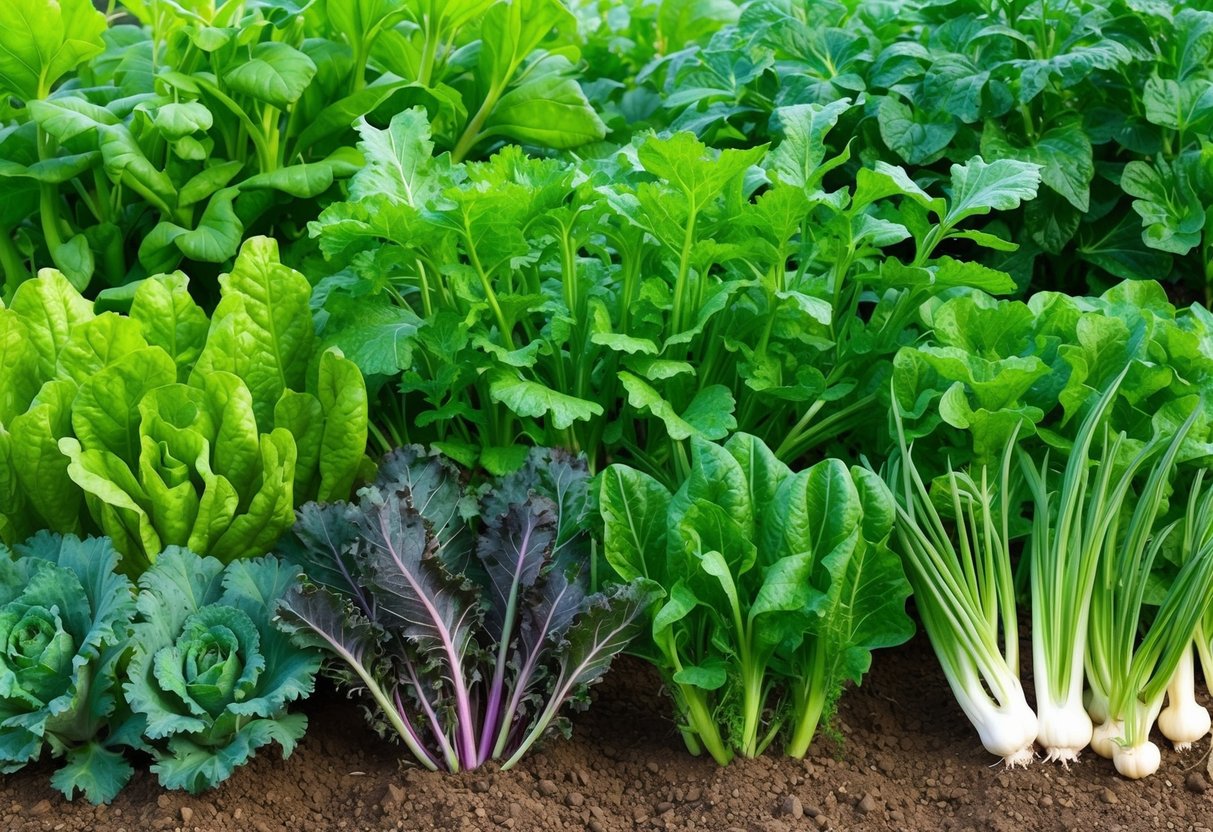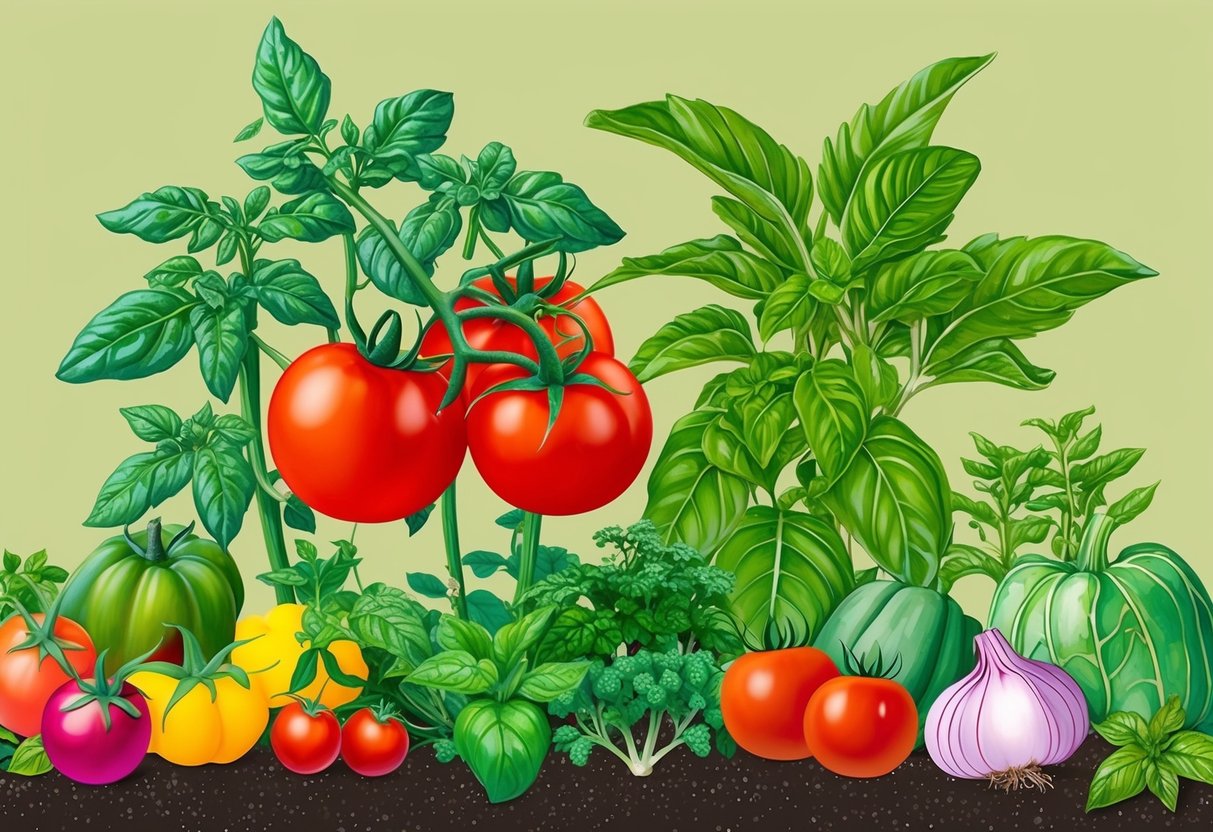
Growing a successful vegetable garden goes beyond just planting seeds and watering regularly. Companion planting helps gardeners achieve bigger, healthier harvests by placing specific vegetables, herbs, and flowers together so they naturally support each other’s growth.
This method takes advantage of plant partnerships to maximize space, minimize pests, promote better pollination, and enrich soil health. It makes it easier to get the most out of every square foot of a garden.
For those new to the concept, companion planting means choosing combinations of vegetables that thrive when grown side by side. Certain pairs, like tomatoes and basil or carrots and onions, can boost each other’s growth and even help repel insects that might otherwise harm crops.
Readers interested in discovering which vegetables work well together and which ones don’t can find detailed guidance in a companion planting chart.
Anyone looking to reduce pests, improve yields, and promote a thriving vegetable patch will benefit from understanding how plant relationships work in a home garden. Learning the basics of companion planting equips both beginners and experienced growers with practical tools and simple planning strategies.
What Is Companion Planting?

Companion planting is a gardening method that uses plant combinations to naturally boost vegetable health, support pest control, and improve harvests. This practice addresses how certain plants support or hinder each other’s development when grown close together.
Core Principles of Companion Planting
The main idea behind companion planting in vegetable gardening is that growing specific plants together can create beneficial relationships. These benefits may include:
- Attracting pollinators
- Deterring common pests
- Enriching soil through nutrient cycling
- Maximizing use of space and light
Some plant pairs, like tomatoes and basil or beans and corn, have been shown to improve each other’s growth. For example, beans fix nitrogen in soil, feeding heavy-feeding crops like corn, while tall corn provides support for climbing beans.
Careful planning and plant selection are critical, as some combinations—such as onions and beans—can hinder growth. Common companion planting strategies for growing vegetables involve interplanting flowers like marigolds to repel insects or using aromatic herbs to confuse pest insects’ sense of smell.
Planting a mix of deep-rooted and shallow-rooted vegetables helps reduce competition for resources and improves plant resilience.
Historical Beginnings and Traditions
Companion planting features deep historical roots in traditional agriculture across the world. One of the best-known examples is the “Three Sisters” method, widely practiced by Indigenous peoples of the Americas.
This approach involves growing corn, beans, and squash together, with each plant offering distinct benefits to the group.
- Corn acts as a natural trellis for climbing beans
- Beans fix nitrogen, adding fertility to the soil
- Squash spreads along the ground, creating a living mulch that conserves moisture and suppresses weeds
These traditions are not limited to the Americas. In Europe and Asia, gardeners paired crops to naturally deter pests and improve flavors, such as planting garlic among vegetables to reduce insect problems.
Over the centuries, these practical observations were passed down and refined for different climates and growing conditions. Modern companion planting adapts these time-tested traditions by integrating scientific knowledge about plant relationships and pest management.
More details on traditional and modern practices can be found in this companion planting guide.
Key Benefits of Companion Planting
Companion planting offers practical advantages in any vegetable garden. By growing compatible plants together, gardeners can encourage better crop productivity, effective pest control, and improved pollination.
Improved Harvest Yield
Planting strategies that group mutually beneficial vegetables can boost overall yields. For instance, pairing nitrogen-fixing legumes with heavy-feeding crops like tomatoes or corn naturally enriches soil nutrients.
This practice improves plant health and vigor, often resulting in larger or more abundant harvests. Some combinations help optimize garden space, allowing for tighter spacing and better use of sunlight.
Such arrangements also foster balanced competition, preventing certain plants from crowding others. Including a mix of deep and shallow-rooted crops supports healthier soil structure.
Diverse root systems enable roots to access water and nutrients more effectively. These principles are commonly used by experienced growers to help maximize harvests without extra fertilizer or pesticides, as outlined by the Farmers’ Almanac’s companion planting guide.
Natural Pest Control
Companion planting helps reduce the need for chemical pesticides by utilizing nature’s own pest control mechanisms. Certain plants can repel specific pests, while others attract beneficial insects that prey on garden pests.
For example, marigolds are often planted alongside vegetables because their scent naturally deters aphids and nematodes. Some popular pairings include planting basil near tomatoes to ward off tomato hornworms, or chives among carrots to protect against carrot flies.
This approach creates a living barrier that disrupts pest cycles and supports a more resilient vegetable garden. A well-planned garden layout can encourage ladybugs, lacewings, and other natural predators to take up residence.
For more methods, see the Beginner’s Guide to Companion Planting for quick tips about natural pest deterrence.
Enhanced Pollination
Pollination is crucial for fruit set and a productive harvest. Companion planting can play a major role in attracting pollinators like bees and butterflies to the vegetable garden.
Interplanting flowering herbs and vegetables, such as dill or borage, boosts the presence of pollinators and helps ensure more flowers are visited. Plants with different flower shapes, sizes, and bloom times support a diverse population of pollinators, extending their stay in the garden.
Even the timing of blooms can help—early-flowering companions offer food sources before main crops flower. Cluster plantings of pollinator-friendly species make gardens more visually appealing and biologically active.
For additional details on attracting pollinators through companion planting, the Almanac provides a helpful companion planting chart and guide.